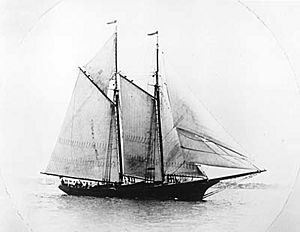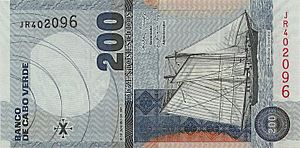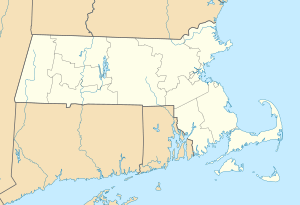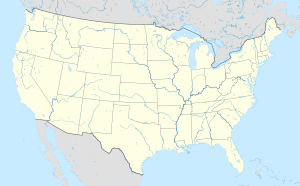Effie M. Morrissey facts for kids

Effie M. Morrissey in 1894
|
|
Quick facts for kids History |
|
|---|---|
| Name | Effie M. Morrissey |
| Builder | John F. James & Washington Tarr, Essex, Massachusetts |
| Launched | 1 February 1894 |
| Renamed | Ernestina |
| Status | Training vessel |
| General characteristics | |
| Type | Two-masted Gaff rigged schooner |
| Tonnage | 120 GRT |
| Length |
|
| Beam | 24 ft 5 in (7.4 m) |
| Draft | 13 ft (4.0 m) |
| Propulsion | Sails and diesel engine |
| Sail plan | 8,000 sq ft (740 m2) |
|
Ernestina (schooner)
|
|
| Location | Steamship Wharf, New Bedford, Massachusetts |
| Built | 1894 |
| Architect | George Melville McClain; James & Tarr Shipyards |
| NRHP reference No. | 85000022 |
| Significant dates | |
| Added to NRHP | January 3, 1985 |
| Designated NHL | December 14, 1990 |
The Effie M. Morrissey (now known as Ernestina-Morrissey) is a famous old sailing ship called a schooner. You can see her on display in New Bedford, Massachusetts. She started her life as a "high liner" fishing boat, catching lots of fish in the cold waters of the Grand Banks.
Later, this amazing ship went on many scientific trips to the Arctic. Important groups like American museums, the Explorers Club, and the National Geographic Society supported these journeys. She even helped the United States government explore the Arctic during World War II. After all that, she became a "packet ship," carrying mail and people. Today, she is a National Historic Landmark and is the official State Ship of Massachusetts.
Contents
History of a Famous Ship
The Effie M. Morrissey was designed by George McClain in Gloucester, Massachusetts. She was built to be strong enough to handle the tough storms of the North Atlantic Ocean. She was the last fishing schooner made for the Wonson Fish Company.
Workers built her from strong white oak and yellow pine wood at a shipyard in Essex, Massachusetts. It took them four months to build her, and she was launched on February 1, 1894. Her hull was painted black, and her first captain, William Edward Morrissey, named her after his daughter, Effie.
Fishing in the Grand Banks
The Effie M. Morrissey fished out of Gloucester for eleven years. She was known as a "high liner" because she was very good at catching fish. On her very first trip, she brought in over 200,000 pounds of fish! That was enough to pay for her entire building cost.
One of her well-known captains was Clayton Morrissey. He later became the captain of a racing schooner called the Henry Ford. You can see a statue honoring Morrissey, called the Gloucester Fisherman's Memorial, in Gloucester.
In 1905, a new owner, Captain Ansel Snow, started using the Effie M. Morrissey for fishing from Digby, Nova Scotia. In 1912, a writer and photographer named Frederick William Wallace sailed with Captain Snow's crew. He wrote a famous poem about his time on the ship, which many fishermen loved.
In 1914, the ship's ownership moved to Brigus, Newfoundland. There, Harold Bartlett used her for fishing and carrying goods along the coast.
Exploring the Arctic
In 1925, Harold Bartlett sold the ship to his cousin, Captain Bob Bartlett. Captain Bartlett was a famous Arctic explorer. He added an extra engine and made the ship's hull stronger so it could handle the Arctic ice. With help from publisher George Palmer Putnam, Captain Bartlett used the ship for twenty years of Arctic adventures.
Here are some of the important trips Captain Robert Bartlett made on the Effie M. Morrissey:
- 1926 Greenland Expedition: Explored Northwest Greenland for the American Museum of National History.
- 1927 Baffin Land Voyage: Traveled to Western Baffin Land for the American Geographical Society and the Museum of the American Indian.
- 1928 Siberian Arctic Expedition: Explored the Aleutian Islands, Bering Strait, and the Arctic for the American Museum of Natural History.
- 1929 Labrador Motion Picture Expedition: Sailed along the Labrador Coast to film.
- 1930 North East Greenland Expedition: Collected items for the Museum of the American Indian.
- 1931 Norcross-Bartlett Expedition: Gathered plants for botanical gardens and animals for museums. They also studied the ocean, maps, and weather for the US Navy and other groups.
- 1932 Peary Memorial Expedition: A trip to honor explorer Robert E. Peary.
- 1933 Bartlett Northwest Greenland Expedition: Sailed through the Hudson Strait and other areas for museums and the Navy.
- 1934 Greenland and Ellesmere Land Expedition: Collected scientific items for the Philadelphia Academy of Natural Sciences.
- 1935 Northwest Greenland Expedition: Collected for the Field Museum and the Smithsonian Institution.
- 1936 Bartlett Northeast Greenland Expedition: Collected for the Smithsonian Institution and other groups.
- 1937 Bartlett Northwest Greenland Expedition: Collected for the Smithsonian Institution and the Chicago Zoological Society.
- 1938 Northwest Greenland Expedition: Collected for the Smithsonian Institution and other museums.
- 1939 Northeast Greenland Expedition: Collected for the New York Zoological Society and the Smithsonian Institution.
- 1940 Greenland Expedition: The Effie M. Morrissey set a record by sailing very far north, only 578 kilometers from the North Pole.
- 1941 Greenland Expedition: Studied the ionosphere (a part of Earth's atmosphere) in the Arctic.
- 1942 Ungava Bay and Frobisher Bay Voyage: Surveyed areas for air bases for the US Army Air Forces and the US Navy.
- 1943 Frobisher Bay Voyage: Carried supplies and did survey work for US military bases.
- 1944 Southern and Eastern Greenland Voyage: Supplied and serviced US weather bases.
- 1945 Northwest Greenland Voyage: Supplied and serviced US military bases.

Becoming the Ernestina
After Captain Robert Bartlett passed away on April 28, 1946, the Effie M. Morrissey was sold. She was meant to carry mail and passengers between islands in the South Pacific. But she ran into problems at sea and had to return to New York City. On December 2, 1947, a fire started on the boat while she was docked in Flushing, New York.
The schooner was fixed and then sold to Louisa Mendes. She began a new job, carrying goods and people across the Atlantic Ocean to Cape Verde. This was called the "packet trade." When she arrived in Cape Verde, Captain Henrique Mendes renamed her Ernestina, after his own daughter. She made many trips across the Atlantic.
Over time, the Ernestina became old and needed repairs in Cape Verde. In the late 1960s, people in the United States became interested in saving this historic ship. In 1977, the people of Cape Verde decided to give the Ernestina as a gift to the United States. The Foreign Minister of Cape Verde said it was a sign of their respect for the American people.
A National Historic Landmark
In August 1982, the Ernestina's hull was completely rebuilt in Cape Verde. She then sailed to the United States with a crew from both Cape Verde and America.
In August 1988, the schooner returned to Brigus, Newfoundland, which was Captain Bob Bartlett's hometown. This trip marked 113 years since his birth. In 1990, the United States Department of the Interior officially named the Ernestina a National Historic Landmark. This means she is a very important historical place. Her restoration was finished in 1994. In 1996, she became part of the New Bedford Whaling National Historical Park. The Commonwealth of Massachusetts now owns her.
The schooner ERNESTINA, built in 1894, is the oldest surviving fishing schooner from the Grand Banks. She is the only fishing schooner built in Gloucester in the 1800s that is still around. She is also one of only two remaining examples of the famous Fredonia-style schooners, which were a very important type of American fishing vessel. The ERNESTINA is also one of only two sailing ships used for Arctic exploration that are still floating in the United States. Today, the ERNESTINA regularly sails along the New England coast, offering educational trips for people to learn about her history and the sea.
—NHL designation
In 2014, the Massachusetts Department of Recreation and Conservation approved a large restoration project for the ship. This project cost $6 million and took place at the Boothbay Harbor Shipyard in Boothbay Harbor, Maine. After waiting for good weather, the ship finally arrived in Boothbay Harbor in April 2015 and was taken out of the water for the work to begin.
See also



